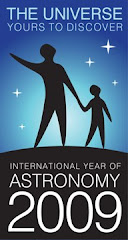A few years ago I taught online courses about lunar geology. Now NASA is actively working to return to the Moon and finds that many of its engineers and others need to learn about the Moon. Not just geology, but especially information about the physical characteristics of the soil and near surface material that will effect living and working there. So this year Johnson Space Center sponsored Moon 101 - A Course in Lunar Science for Non-Specialists, ten lectures apparently organized by Paul Spudis. The wonderful thing is that the Powerpoints - all 80 MB of them - are online for download and study by anyone interested. I printed them all out and spiral bound them, adding another significant reference to my lunar library collection. The presentations include basic geologic topics such as the surface, crust, and interior, and also more practical matters such as the environment, poles and lessons learned from the Apollo missions and where future bases should be sited. The last talk is on lunar meteorites, a wonderful source of free samples of the Moon (although you have to pay to go to Antarctica, the Sahara or Australia to find many), but their origin locations are unknown. Many LPOD readers will find some of this material familiar, but other parts, especially the geochemistry and petrology of lunar samples, will be new and somewhat complex. But download it, and as you read through remember that you are getting the same information as the NASA scientists and engineers who will take us back to the Moon. Thanks, Paul, for sharing these Powerpoints!
I'm downloading the files now. I've looked at some of the pages and they are great - if you're a lunatic like me!














